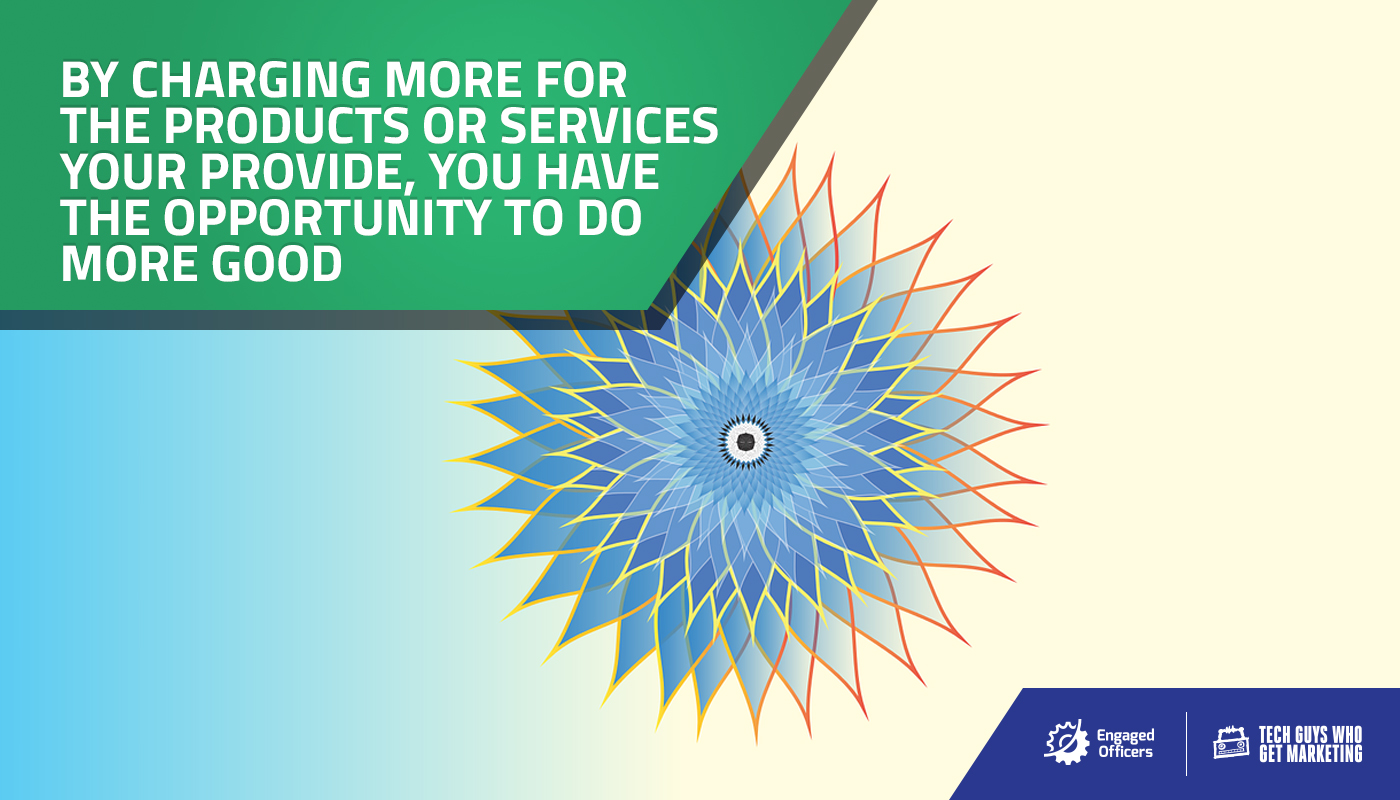You’re charging too little. Why charging MORE multiplies impact.

Back in late July, Elon Musk released his “Master Plan, Part Deux” in which he set out a second 10-year goal for the company.
If you haven’t read it yet, I encourage you to do so. It’s exciting, engaging and a hell of a statement from one of the most innovative leaders today. https://www.tesla.com/blog/master-plan-part-deux
The Master Plan, Part Deux starts off listing the four major objectives he aimed to meet in the past ten years:
- Create a low volume car, which would necessarily be expensive
- Use that money to develop a medium volume car at a lower price
- Use that money to create an affordable, high volume car
- Provide solar power.
What I love about this simple list is that he stated early and honestly that he must first create a low volume car at a price point out of reach for a majority of buyers.
Elon knew it would be expensive to make an electric car. He also knew the people who could afford an expensive, electric car would want something sexy. In July 2009, the Tesla Roadster was delivered to those brave (and affluent enough) to pre-order the $109,000 sports car. Three years later in late June 2012, Tesla started deliveries of the Model S. After a few years of production, the price for the Model S has dropped to an MSRP of $66,000.
In 2015, a luxury SUV dubbed the Model S was released for $132-144k. Again, a steep steep price.
Finally in March of this year, Tesla announced the Model 3 at a unbelieveable price of $35,000 base. After government incentives (and a huge discount if you live in Colorado), the Model 3 is finally an affordable, 100% electric car available to the masses.
On the night of the launch, pre-orders were taken for a single, refundable $1,000 deposit. In less than 60 days, Tesla had over 370,000 pre-orders for the Model 3; triple the number of Model S’s sold in 2015. Incredible!
In the Master Plan, Part Deux, Elon talks about his mission for self-driving cars. He said…
“I should add a note here to explain why Tesla is deploying partial autonomy now, rather than waiting until some point in the future. The most important reason is that, when used correctly, it is already significantly safer than a person driving by themselves and it would therefore be morally reprehensible to delay release simply for fear of bad press or some mercantile calculation of legal liability.”
I feel in this statement, Elon has said “Yes, I’m building an electric car. Yes, my company will disrupt the industry. But it’s not just for profits; it’s for the sake of human lives.”
Musk has created a company that solves a major problem in the world – automobile deaths. He did it first by charging what he had to charge in order to finally release a product that solved the problem he was after. He couldn’t have just released the Model 3 first; he would have lacked the infrastructure, the engineers, the software developers and the experience to do so.
All too often, I hear from well-meaning doctors and entrepreneurs that they don’t want to charge a premium price. They got into their line of work because of a passion to help someone who needs their services, who cannot pay a market rate.
When an entrepreneur prices himself as the cheapest professional in the area, margins are tight. That means the resources available to serve patients is diminished. An unwillingness to set a price point high enough to create a surplus of time, money and/or other resources means a decreased experience for the customer.
In your business, is there a way to increase revenue through a higher priced Model S-style product or service, which would then increase your resources to develop a solution for the mass market? Are you trying ardently to sell a Model 3 product or service, only to find the margins are so tight that it’s impossible to create the transformation or experience you want?
My encouragement is to see if there are a few customers you can offer a higher-tiered service or product to, which comes with a larger profit margin. You can then take the time freed up (and already paid for) and use it to create your Master Plan. You can find a more constructive, effective way of reaching your mass market without dropping your personal income to a level that makes it difficult to shoulder the risks of an entrepreneurial lifestyle.
In the comments below, share a time you increased your product or service fee in order to provide a better service.
Elon Musk had a 10 year plan. Bo Eason had a 20 year plan. Dan Sullivan has a 25 year plan. Thing in long timeframes and you’ll be able to accomplish so much more — and serve so many more people.
See you next week,
Casey
PS – On Tuesday, September 13 at 3pm Eastern (Noon Pacific), Tech Guys CEO Mike Cline and I are hosting a Marketing and Technology Insider Webinar for Executives. This is a no-cost webinar, and you can sign-up here. It’s gonna be good!
